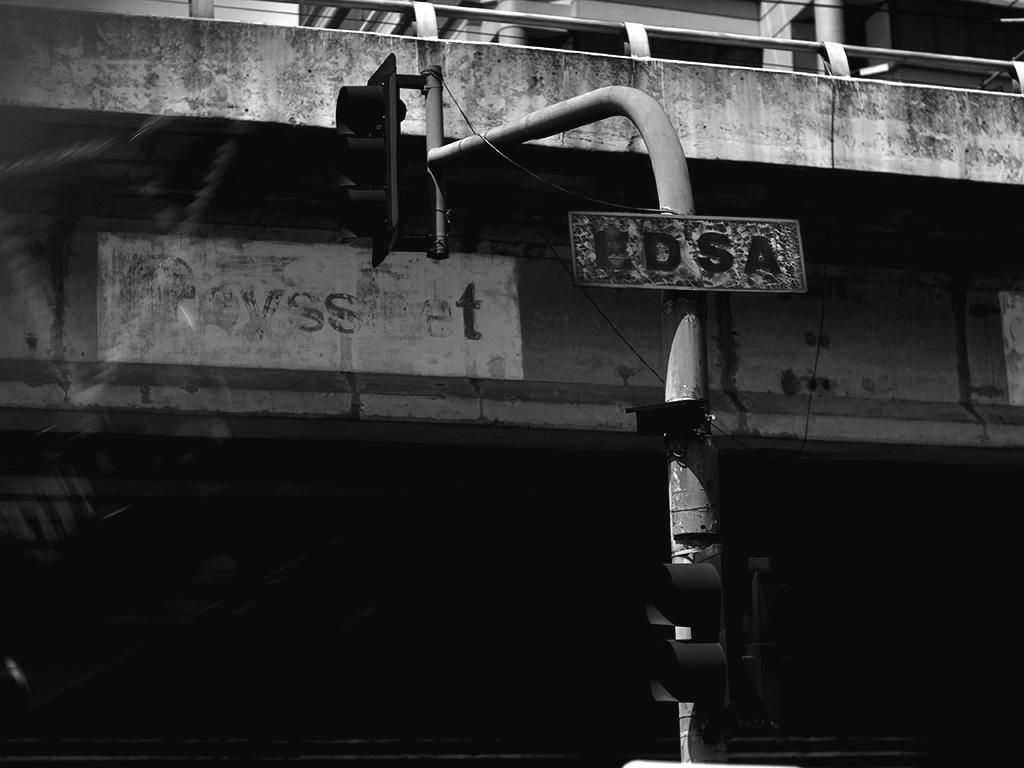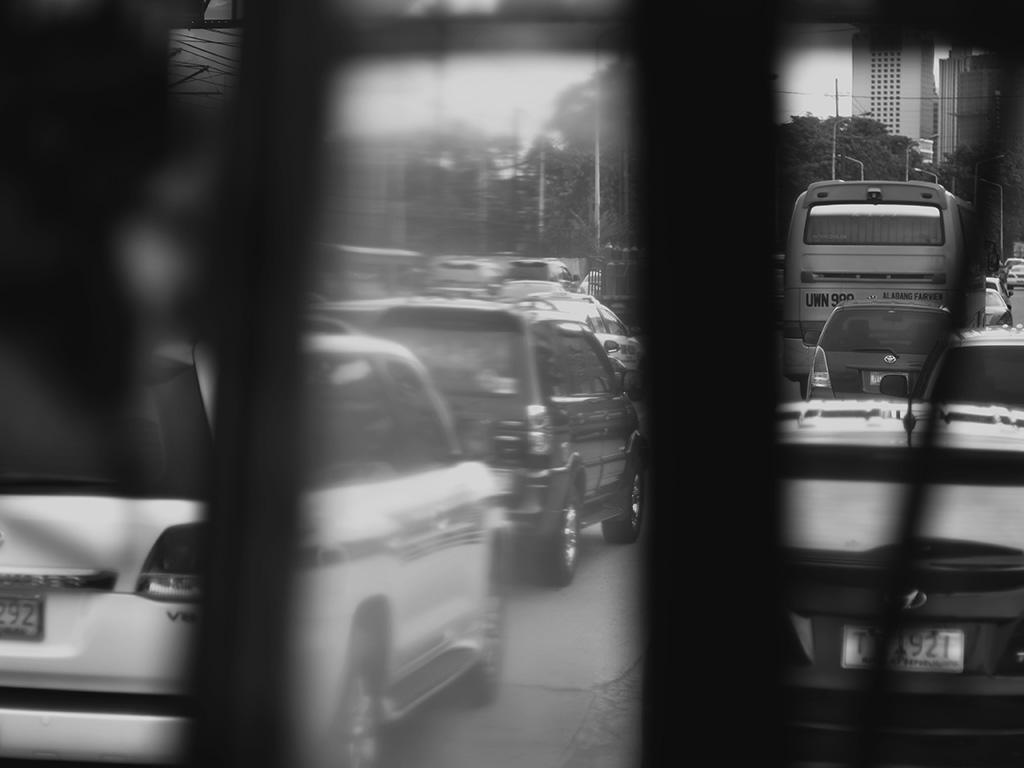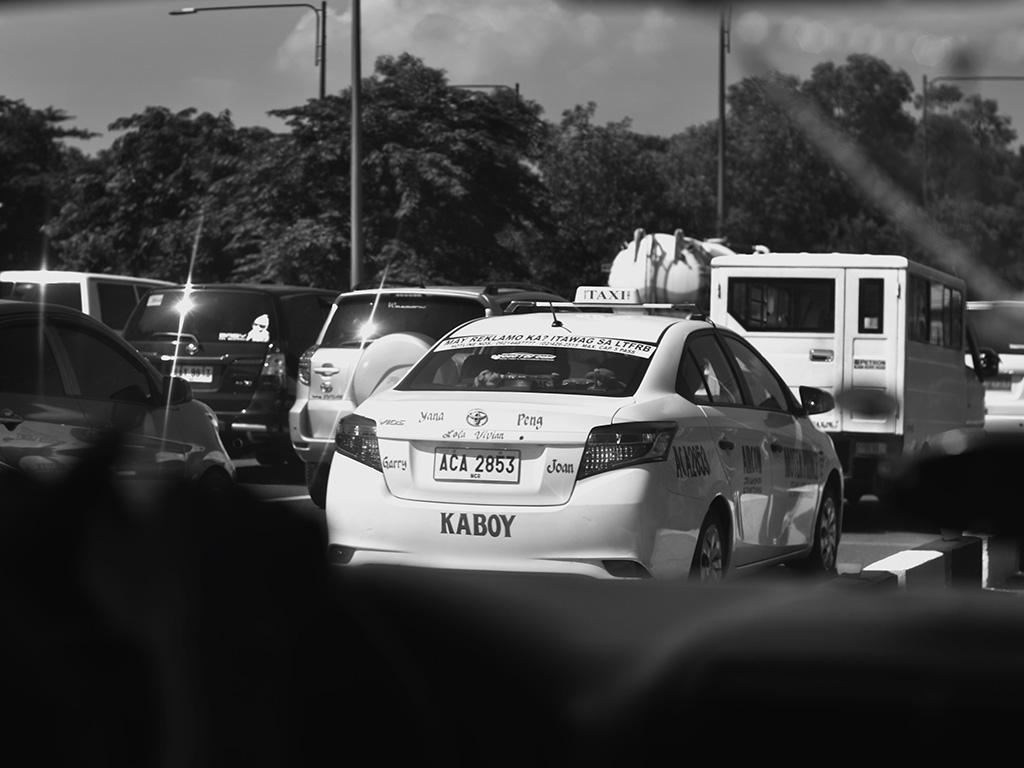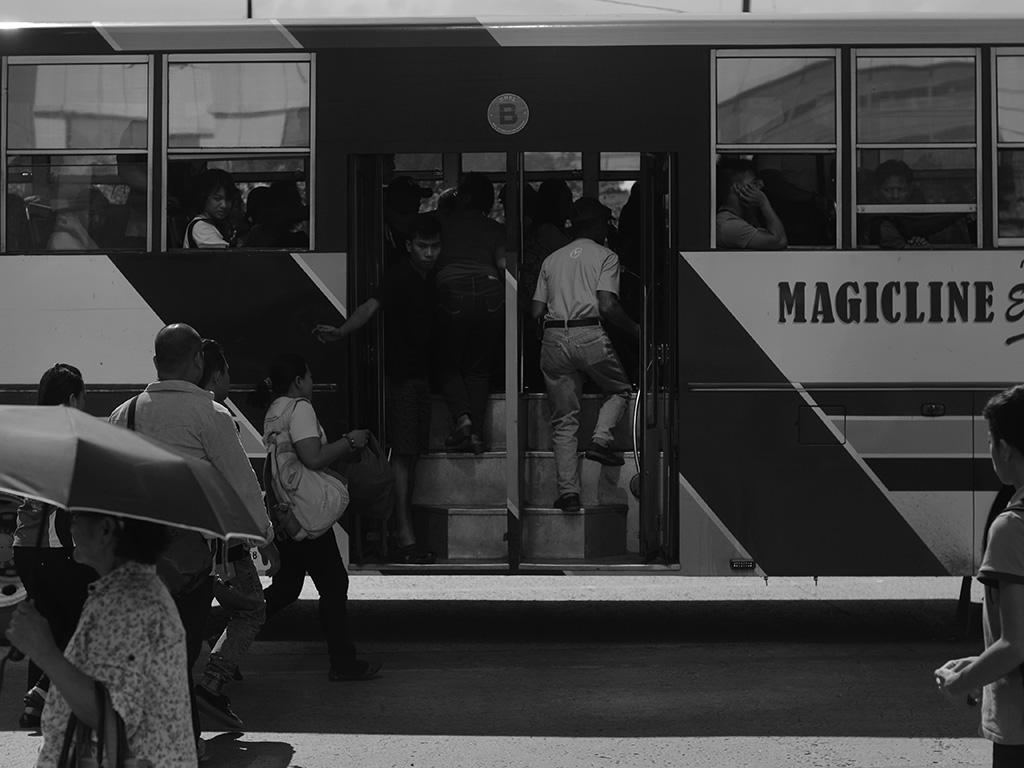Filtered By: Topstories
News
Emerson Guiquing has been a bus driver for 40 years.
From Fairview, the 62-year-old enters EDSA at Timog Avenue before heading off to Alabang. His route has not changed in the four decades he's been making a living through driving.
Like every other motorist, Guiquing has suffered due to the traffic that plagues Metro Manila.
"Dati, nakaka-apat na biyahe pa kami. Ngayon, tatlo na lang dahil sa traffic," he says.
Less rounds mean less passengers. This means there are days he does not reach the quota, which range from P14,000 to P20,000.
"Minsan, parang wala na eh. Anong magagawa namin? Nawawala kami sa quota, nawawalan kami ng sahod," he said.
Having been on the road for 40 years, Guiquing is painfully aware of how congested the roads have become recently.
"Nung sa mahigit sampung taon, medyo maganda-ganda pa noon," Guiquing said. "Ngayon lang kasi dumami ang mga vehicles natin, kaya magkaka-traffic talaga."

It wasn't always this way, says Rogelio, a 56-year old driver.
He has been a driver since 1985, but switched from driving a bus to operating a taxi in 2000 due to the increasingly stressful trips.
"Dati, nung mga '90s, maluwag pa ang kalsada," says Rogelio.
"'Pag Sabado, Linggo, mabibilang mo pa yung tumatakbo sa EDSA noon," he continued. "Ngayon Linggo ng umaga lang yung maluwag."
Rogelio desperately misses the days when moving around the city was not as tedious. When he had been a bus driver, he was able to make eight trips from Fairview to Ayala via EDSA by 5 p.m.
"Dati P7,000 lang ang quota," he shared. "Nakaka-walong ikot ako noon. Ngayon P20,000 ang quota nila, tapos nakaka-tatlong ikot na lang sila. Minsan hanggang madaling araw pa sila."
"Maluwang ang EDSA noong araw," he added. "Papunta ngang airport, tinakbo ko yan 20 to 25 minutes.
Like Emerson, Rogelio blames the increase in the number of vehicles as the problem.
"Etong mga nakaraang taon, tumindi talaga. Ang dami talagang sasakyan. Sila nga nagsabi, dalawang libo buwan-buwan ang dinadagdag at nareregister sa LTO. Yung dating 160,000 na kapasidad ng EDSA , ngayon almost nasa 300,000 na raw," he says, citing the reports he hears on the radio as his source.
"Padagdag ng padagdag, walang pine-phase out."

The numbers bear him out. A study conducted by Japan International Cooperation Agency (JICA) in close coordination with Department of Transportation and Communications (DOTC), Department of Public Works and Highways (DPWH), Metro Manila Development Authority (MMDA), and other relevant agencies, shows just how much more congested Metro Manila has become from 1980 to 2010.

During this period, the capital region's population doubled from 5.9 million to 11.8 million.
This timespan also saw the increase of roads constructed within the metropolis from 675 to 1,032 kilometers, a 150 percent increase.
But the number of vehicles on the road during this span grew at a faster pace, going from 446,000 units in 1980 to 1.9 million in 2010 — a 430 percent increase.
A recent report by the MMDA covering 2010 to 2014 shows the continued increase in daily traffic.
From an average daily traffic of 2.289 million in 2010, that number has increased to 2.576 million vehicles plying Metro Manila.
An average of 360,417 vehicles plied EDSA everyday in 2014, an 11.6 percent increase from the 2010 daily average of 322,936.

Perhaps the surge in new vehicles that pass through EDSA could be tolerable if the drivers were more disciplined, Emerson says.
But while many private motorists complain about bus drivers on EDSA, Emerson thinks the problem is the other way around.
"Ang mahirap ngayon, yung sa lane namin, yung yellow lane — dapat nasa yellow lane lang kami. Ngayon, maraming mga sumisingit na private," he said. "Siguro [kung] hindi na sila makapasok sa way ng mga bus, medyo mabawas-bawasan siguro [ang traffic].
"Kaso sa dami naman ng mga private, merong nagmamadali...ilag-ilag sila sa daan, kaya pumapasok sila sa yellow lane," he added.
But not all of Emerson's colleagues share this view.
Rhoel has been a driver since 1994, starting out with a taxi, driving a bus for a couple of years, before returning to driving cabs.
Back during his bus driving days, he and his conductor already had a system for skirting the system when he drove from Fairview to Alabang via EDSA.
"Meron kasing mga bawal daanan yung bus... 'yung mga sa ilalim, yung tawiran ng mga tao," he recounts. "Pero kasi mas maginhawa yung biyahe dun. So alam na ng konduktor, tatakbo na siya sa MMDA officer."
Bribing traffic enforcers to gain leeway on EDSA, Rhoel says, is a usual practice for some bus drivers.
"Hindi lang naman kami eh," Rhoel shrugs.
MMDA General Manager Emerson Carlos does not deny that some traffic enforcers participate in bribery.
"Talagang meron kaming nahuhuli na nagpapa-bribe," Carlos admits. "Marami na kaming nasusupend."
Carlos says the MMDA periodically sends people to the field undercover to gather intelligence reports. They also make use of CCTV footages as tools to weed out the traffic enforcers who allow themselves to be bribed.
"'Di naman namin tinotolerate yan," Carlos assures.

Though he no longer drives a bus, Rhoel still has friends who do.
These days, he says, bus drivers and motorists are more hesitant to break highway rules since the Philippine National Police Highway Patrol Group (PNP-HPG) took over traffic operations along EDSA.
Bus drivers could bribe MMDA enforcers, Rhoel says, but they could not do the same with HPG cops.
"Respeto din siguro," he says.
Emerson also praises the HPG. He claims to have noticed that the traffic has eased somewhat.
"Medyo nawala ng konti yung mga pasaway na sasakyan," Guiquing says. "Medyo mabilis ngayon ang yellow lane."
Because of this, Guiquing is hoping that he can earn as much as he used to when he was able to make numerous back to back trips around EDSA. His old wages were able to put his two daughters through school, he says, and that much money would make his life so much easier now.
"Siyempre dito lang kami naghahanapbuhay," Guiquing says. "Wala eh, hanapbuhay eh. Kailangan magkaroon ng kita." —JST, GMA News
More Videos
Most Popular




